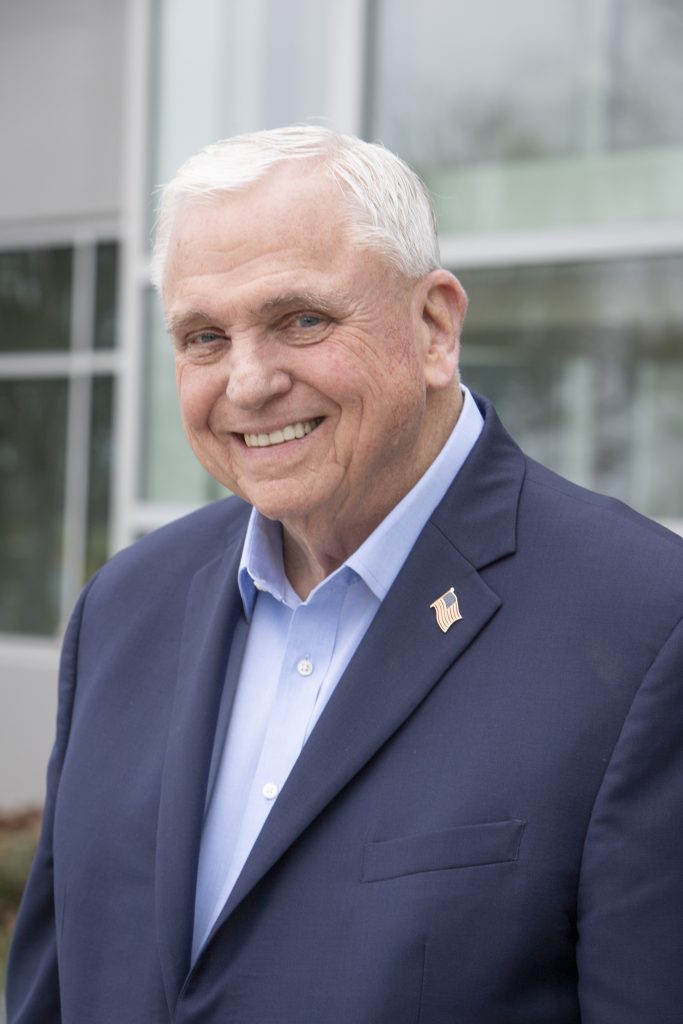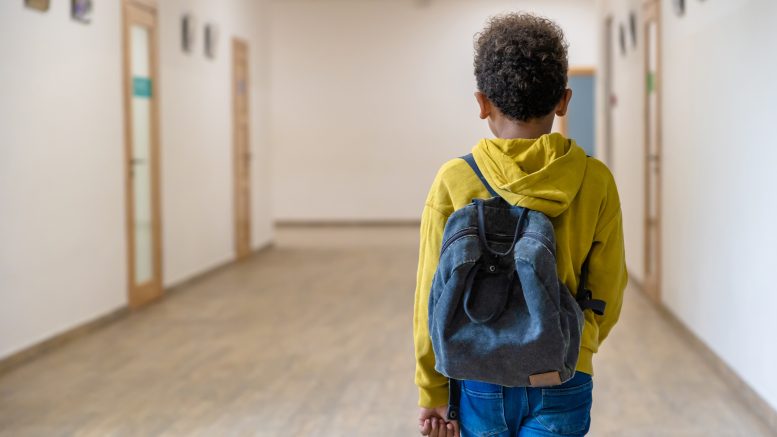Children and teenagers have been through a lot the past few years, with the disruption and isolation that was COVID, on top of family stress or trauma that can be present any time. Sacramento County Office of Education is focused on this issue for our kids, and Sacramento County Superintendent of Schools David W. Gordon sat down with us to discuss his perspective—and the plans SCOE is putting in place.
Dave, thanks for meeting with me. Can you talk about the scope of the project for mental health and about the importance of having licensed clinicians in schools?
It’s important because a child being physically and mentally healthy is crucial to being able to learn and to take advantage of opportunities that school provides for them. As they go through the grade levels and look toward employment and college, it’s foundational for a good life for them.

SCOE Superintendent
Our goal is to help bring schools and health systems much closer together. We call our model, “Schools as Centers of Wellness,” meaning school and health staffs creating a culture of wellness and prevention, and not just waiting for health issues to get severe enough to require treatment.
In other words, the mental health crisis is not something new; it was no doubt exacerbated by the pandemic, but we knew it was there before. And one can speculate on the reasons for that: social media, the ability to amp up things like bullying through social media, kids being on screens all the time rather than in person building relationships. So, we were working on this approach long before the pandemic.
Our approach is a partnership between SCOE and County Health. It places licensed clinicians on-site at schools and avoids a situation where someone is told: ‘We have just the thing for you, we have a referral for you, so you’re gonna go downtown and somebody’s gonna see you.’ It doesn’t work, it doesn’t happen.
The other part of it was that this focus on prevention and wellness has to be built into the culture of the school, and what better person to build it than someone from the health systems. Whether it’s behavioral health or any other kind of health, early intervention and early care is absolutely crucial.
How will the students connect up with the system?
We will have one of these clinicians in every school in the county and the elementary school will provide an entrée into the preschools and the childcare centers—so we hitched on to the program a “family navigator.” A person who will be the liaison between families and the health systems. The parent would have confidence that their child just wouldn’t be lost in the system, because they could look the clinician they already know in the eye and say, ‘Tell me what’s going to happen now.’
And it’s the whole notion that building a culture requires a person. A program or a project doesn’t win you over saying, ‘This project is here.’ It doesn’t build relationships—and kids and families seeking this kind of care requires them being in trusting relationships with the people they’re dealing with. The other argument for placing a clinician in each school is that the schools are present in every single community in the underserved areas. There’s a school there, and it’s developed a trusting relationship with its community. And the teachers have trusting relationships with the students. And that’s at the core of what it will take to get young people and families to seek treatment, to seek assistance, and to trust the way that it’s going to be delivered.
And it must initially be less intimidating to talk to somebody you’re seeing around the campus every day as opposed to get handed an appointment slip sending you downtown.
Yes, exactly. And what we found is that a lot of these kids, if not the majority, don’t ever make it downtown to an appointment. The 1,000 or so students that we’ve already served in this program, I think it’s very fair to say that most of them would never have gotten that service at all, if not for this approach to providing access at the school. And we have evidence in a few cases where some of these kids went home and had suicide notes that they had written, but they didn’t commit suicide, so it’s actually saving lives as well.
…a lot of the clinicians come to me and I say, ‘What’s the thing that surprised you the most about this?’ And they say, ‘Well, clearly, it’s how many kids have come up to us and whispered to us: I’m here because my friend told me you’re a safe person to talk to.’
Dave Gordon, SCOE Superintendent
In terms of this collaboration that you put together with the county, the health plans, where they’re all coming together to make the mental health system more accessible, make it better—can you talk a little bit about that?
Yes, I think more accessible is the key word. Efficiency is a loaded term. Because one can say the system now is efficient, but it doesn’t reach many of those it’s intended to reach. So, the idea is it’s much more responsive now, because there’s a person on hand to work with everybody involved at the school: the teachers, the counselors, the principal, and then most of all, the students, and then families.
And so, the vision is to steadily build this up. So, there’s a person or clinician at every school, which would be more than 300 clinicians across the county.
Yes.
In terms of mental health treatment for the region, this would be a tremendous foundational support, I would think.
Well, sure. And it’s crucial that the clinicians also have the inclination and the ability to build relationships, and that’s what we screened for. And when we know what kind of people would help build relationships, our No. 1 goal is to dramatically increase the diversity of the clinician corps. We are already in the process of doing that. We’re about over 50% of persons of color who are coming to us with their applications. So, it’s diversifying the service population so that they look more like the families and kids that they’re serving as well as being culturally competent. But it’s also people who see it as a propensity to want to work in public service alongside people who are serving young people day in and day out, that want to be in that mix and want to do the relationship-building to promote wellness and prevention.
Dave, can you talk a little bit about mentorships and paid internships and how those kinds of programs are developing your pipeline?
Sure, the pipeline starts as early as peer specialists: These would be younger people, college students—younger people in community college, or a four-year college—who would be able to work in the schools. They just came out of the schools and know their peers’ needs.
We’re also working with schools to have peer mentors in the high schools themselves, who could work with students in the school and possibly also in the middle school. And all of those will be paid roles.
In fact, we do a series of seminars in the high schools, where students receive a $1,000 stipend for going through 12 sessions in this series, which orient them to the system and the needs in the system and the potential roles they can play in the system. And it’s basically a recruiting mechanism to try to interest young people in this as a potential career.
So instead of working at In-and-Out burgers while they’re in high school or college, they can be on-site at schools.
Exactly. Then the next level is a person in training to be a clinician. When they finish their education from the university, they must do 3,000 hours of work before they can get their licensure from the state. So, they become associate clinicians and we place them with a salary in the larger schools. And that’s been working out beautifully. We’re going to have 80 people in the pipeline—this coming year, 80 people!
It must be a very different experience for a psychologist or a clinician to be working within a school system where they’re embedded, as opposed to being in private practice. I think maybe I would find the school system a much more rewarding experience.
I mean, I really think it is, but it’s up to them, to the young people, to decide for themselves. We’re there to sell it as a place to have a very rewarding career.
Anything else you want to add here?
We’re recruiting but you know, we’ve learned as we’ve gone along which types of candidates will be effective in the school setting—building relationships, not just with the students, but with their colleagues at the school, the other counselors, support people, the administration, the teachers.
As I’ve gotten around to visiting a lot of these schools, a lot of the clinicians come to me and I say, ‘What’s the thing that surprised you the most about this?’ And they say, ‘Well, clearly, it’s how many kids have come up to us and whispered to us: I’m here because my friend told me you’re a safe person to talk to.’ What they say is kept confidential. And that’s the first step in building a trusting relationship.
Thanks for your time today, Dave.






Be the first to comment on "Q&A with David W. Gordon, Sacramento County Superintendent of Schools, on kids’ mental health"